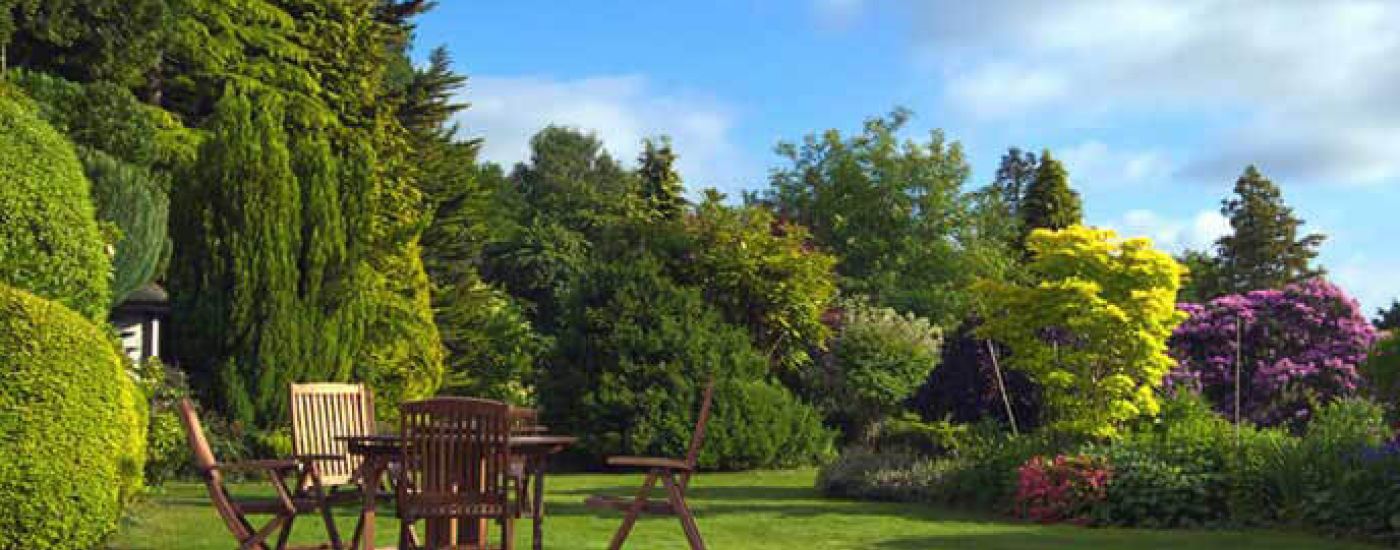Understanding Insect & Disease Problems With Your Trees

Insects and diseases can threaten tree health. As soon as you notice any abnormality in your tree’s appearance, you should begin a careful examination of the problem. By identifying the specific symptoms of damage and understanding their causes, you may be able to diagnose the problem and select an appropriate treatment.
Stress
Basic elements that influence plant health include sufficient water and light, and a proper balance of nutrients. Too much or too little of any of these environmental conditions may cause plant stress.
Environmental stress weakens plants and makes them more susceptible to insect and disease attack.
Trees deal with environmental stresses, such as shading and competition for water and nutrients in their native environment, by adjusting their growth and development patterns to reflect the availability of the resources. Although trees are adapted to living in stressful conditions in nature, many times the stresses they experience in the landscape are more than they can handle and may make them more susceptible to insects and diseases.
Diagnosis
Correct diagnosis of plant health problems requires a careful examination of the situation.
- Accurately identify the plant. Because many insects and diseases are plant-specific, this information can quickly limit the number of suspected diseases and disorders.
- Look for a pattern of abnormality. It may be helpful to compare the affected plant with other plants on the site, especially those of the same species. Differences in color or growth may present clues as to the source of the problem. Non-uniform damage patterns may indicate insects or diseases. Uniform damage over a large area (perhaps several plant species) usually indicates disorders caused by such factors as physical injury, poor drainage, or weather.
- Carefully examine the landscape. The history of the property and adjacent land may reveal many problems. The number of species affected may also help distinguish between infectious pathogens that are more plant-specific as compared to chemical or environmental factors that affect many different species. Most living pathogens take a relatively long time to spread throughout an area, so if a large percentage of plants becomes diseased virtually overnight, a pathogen is probably not involved.
- Examine the roots. Note their color: brown or black roots may signal problems. Brown roots often indicate dry soil conditions or the presence of toxic chemicals. Black roots usually reflect overly wet soil or the presence of root-rotting organisms.
- Check the trunk and branches. Examine the trunk thoroughly for wounds because they provide entrances for pathogens and wood-rotting organisms. Wounds can be caused by weather, fire, lawn mowers, and rodents, as well as a variety of other environmental and mechanical factors. Large defects may indicate a potentially hazardous tree.
- Note the position and appearance of affected leaves. Dead leaves at the top of the tree are usually the result of environmental or mechanical root stress. Twisted or curled leaves may indicate viral infection, insect feeding, or exposure to herbicides. The size and color of the foliage may tell a great deal about the plant’s condition. Make note of these and any other abnormalities.
FREE, No Obligation Consultation
Call Stein Tree Service at (302) 478-3511 or Click Here to request your Free, No Obligation Consultation with one of our ISA Board Certified Arborists.
CALL US
610.723.8072
Serving DE, PA and MD
REQUEST A FREE, NO OBLIGATION CONSULTATION
FEATURED PROGRAMS
Stein Tree Earns Permit to Work in Spotted Lanternfly Quarantine Areas
Stein has a permit to work in spotted lanternfly quarantine areas in Pennsylvania and Delaware. Tree Service Companies have to be trained in proper moving and disposal of materials to avoid spread of the spotted lanternfly and Stein has completed the training courses. Learn more.
Emerald Ash Borer Inspection
In the spring, destructive emerald ash bore![]() r (EAB) adult beetles begin to emerge. These invasive pests can destroy your ash trees. Our specialists are certified to treat for EAB in Pennsylvania and Delaware. For a free consultation, contact us today.
r (EAB) adult beetles begin to emerge. These invasive pests can destroy your ash trees. Our specialists are certified to treat for EAB in Pennsylvania and Delaware. For a free consultation, contact us today.
